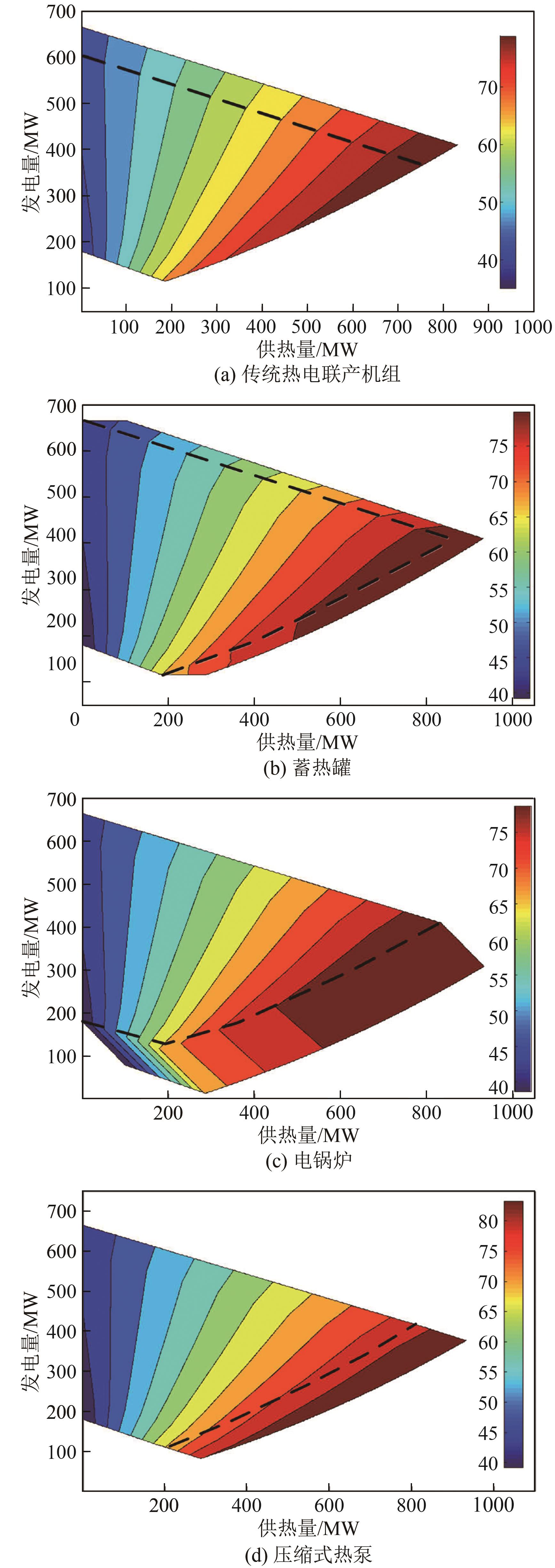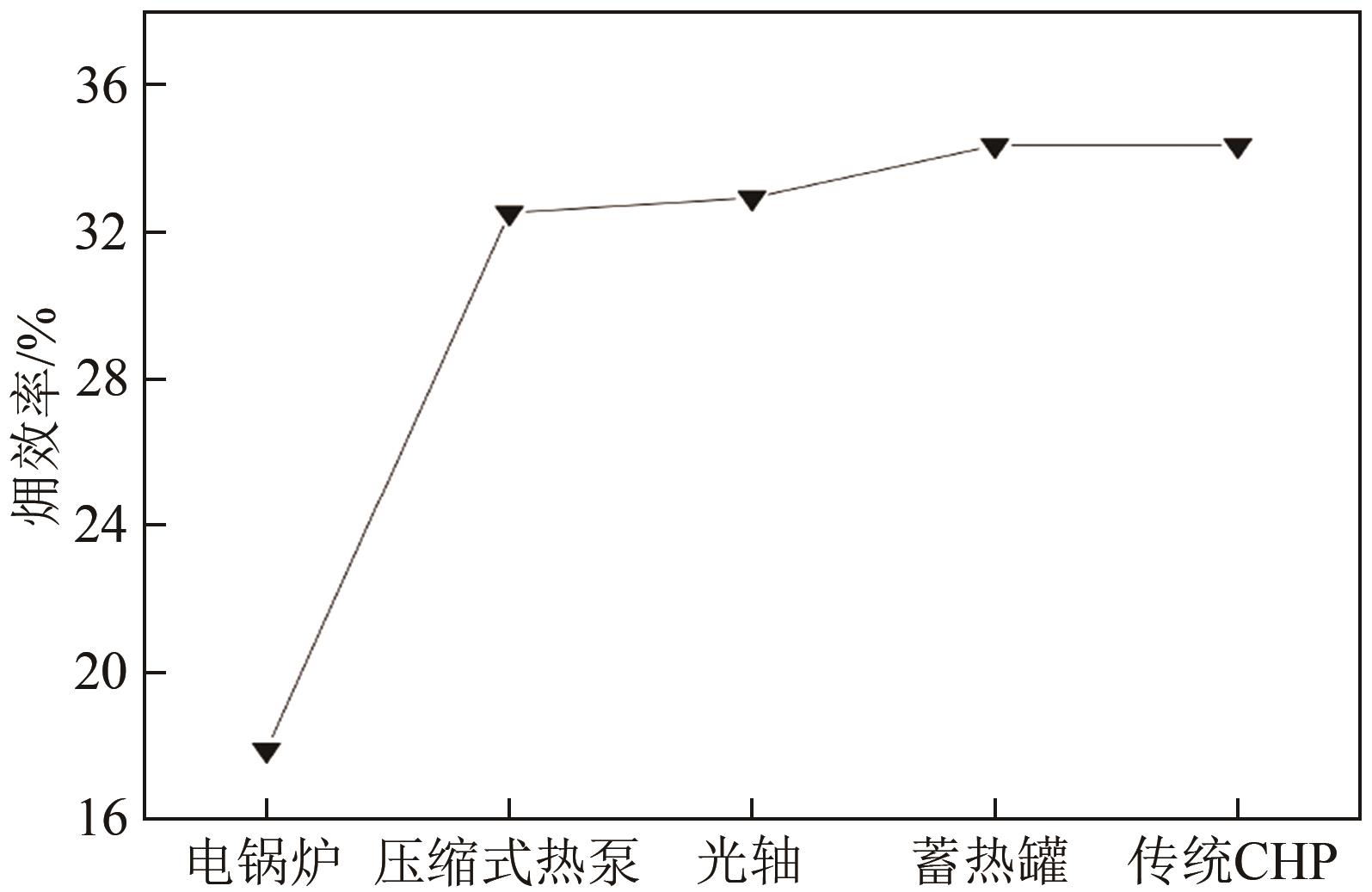| 1 |
王卓辉. 我国弃风弃光电量再利用的分析与对策[J]. 中外能源, 2021, 26(5): 23-26.
|
|
WANG Zhuohui. Analysis and countermeasures for reuse of wind and photovoltaic power curtailment in China[J]. Sino-Global Energy, 2021, 26(5): 23-26.
|
| 2 |
国家能源局. 2019年风电并网运行情况[EB/OL]. [2020-02-28]. .
|
|
National Energy Administration. Wind power grid connected operation in 2018[EB/OL]. [2020-02-28]. .
|
| 3 |
叶泽, 李湘旗, 姜飞, 等. 考虑最优弃能率的风光火储联合系统分层优化经济调度[J]. 电网技术, 2021, 45(6): 2270-2280.
|
|
YE Ze, LI Xiangqi, JIANG Fei, et al. Hierarchical optimization economic dispatching of combined wind-PV-thermal-energy storage system considering the optimal energy abandonment rate[J]. Power System Technology, 2021, 45(6): 2270-2280.
|
| 4 |
张冲, 胡林献, 胡佳. 热电机组比重及热负荷对风电消纳率影响的研究[J]. 电力系统保护与控制, 2013, 41(23): 120-125.
|
|
ZHANG Chong, HU Linxian, HU Jia. Research on the impact of the proportion of thermal power generating units and heat load on the wind power accommodation rate[J]. Power System Protection and Control, 2013, 41(23): 120-125.
|
| 5 |
范庆伟, 兰凤春, 李文杰, 等. 热电联产机组增设储热水罐容量配置研究[J]. 热力发电, 2021, 50(3): 98-105.
|
|
FAN Qingwei, LAN Fengchun, LI Wenjie, et al. Capacity designing for a combined heat and power plant assisted by water storage tank[J]. Thermal Power Generation, 2021, 50(3): 98-105.
|
| 6 |
刘媛媛, 隋军, 刘浩. 燃煤热电厂串并联耦合吸收式热泵供热系统研究[J]. 中国电机工程学报, 2016, 36(22): 6148-6155.
|
|
LIU Yuanyuan, SUI Jun, LIU Hao. Research on heating system of serial-parallel coupling absorption heat pump for coal fired power plants[J]. Proceedings of the CSEE, 2016, 36(22): 6148-6155.
|
| 7 |
刘忠秋, 张国柱, 邱寅晨, 等. 热电联产机组集成热泵实现热电解耦的潜力与能耗特性分析[J]. 发电技术, 2019, 40(3): 253-257.
|
|
LIU Zhongqiu, ZHANG Guozhu, QIU Yinchen, et al. Analyses on heat-power decoupling potential and energy consumption characteristics for CHP plant integrated with heat pump[J]. Power Generation Technology, 2019, 40(3): 253-257.
|
| 8 |
崔杨, 陈志, 严干贵, 等. 基于含储热热电联产机组与电锅炉的弃风消纳协调调度模型[J]. 中国电机工程学报, 2016, 36(15): 4072-4081.
|
|
CUI Yang, CHEN Zhi, YAN Gangui, et al. Coordinated wind power accommodating dispatch model based on electric boiler and CHP with thermal energy storage[J]. Proceedings of the CSEE, 2016, 36(15): 4072-4081.
|
| 9 |
杨世豪, 孙小平, 田丰, 等. 热电联产中电锅炉调峰问题[J]. 沈阳航空航天大学学报, 2021, 38(1): 63-69.
|
|
YANG Shihao, SUN Xiaoping, TIAN Feng, et al. Peak regulation of electric boiler in cogeneration[J]. Journal of Shenyang Aerospace University, 2021, 38(1): 63-69.
|
| 10 |
曹丽华, 丁皓轩, 葛维春, 等. 基于遗传算法的热电机组储热罐最优运行策略[J]. 中国电机工程学报, 2020, 40(11): 3574-3583.
|
|
CAO Lihua, DING Haoxuan, GE Weichun, et al. Optimal operation strategy of heat storage tank in CHP unit based on genetic algorithm[J]. Proceedings of the CSEE, 2020, 40(11): 3574-3583.
|
| 11 |
王守鑫, 洪涛, 李超, 等. 基于低压转子光轴技术及蓄热技术的300MW机组灵活性改造[J]. 山东电力技术, 2020, 47(2): 77-80.
|
|
WANG Shouxin, HONG Tao, LI Chao, et al. Flexibility transformation of a 300MW unit based on low pressure rotor smooth shaft technology and heat storage technology[J]. Shandong Electric Power, 2020, 47(2): 77-80.
|
| 12 |
戈志华, 张倩, 熊念, 等. 330MW供热机组低压缸近零出力热力性能分析[J]. 化工进展, 2020, 39(9): 3650-3657.
|
|
GE Zhihua, ZHANG Qian, XIONG Nian, et al. Thermal performance analysis of 330MW heating unit with low pressure cylinder near zero output[J]. Chemical Industry and Engineering Progress, 2020, 39(9): 3650-3657.
|
| 13 |
陈永辉, 李志强, 蒋志庆, 等. 基于电锅炉的火电机组灵活性改造技术研究[J]. 热能动力工程, 2020, 35(1): 261-266.
|
|
CHEN Yonghui, LI Zhiqiang, JIANG Zhiqing, et al. Research on flexible transformation technology of thermal power unit based on electric boiler[J]. Journal of Engineering for Thermal Energy and Power, 2020, 35(1): 261-266.
|
| 14 |
吕泉, 陈天佑, 王海霞, 等. 配置储热后热电机组调峰能力分析[J]. 电力系统自动化, 2014, 38(11): 34-41.
|
|
Quan LYU, CHEN Tianyou, WANG Haixia, et al. Analysis on peak-load regulation ability of cogeneration unit with heat accumulator[J]. Automation of Electric Power Systems, 2014, 38(11): 34-41.
|
| 15 |
张宇, 张利, 王坤, 等. 热电联产机组集成吸收式热泵的热电解耦与能耗特性理论研究[J]. 汽轮机技术, 2020, 62(2): 143-146, 116.
|
|
ZHANG Yu, ZHANG Li, WANG Kun, et al. Theoretical study on heat-electricity decoupling and energy consumption charateristics of combined heat and power plant by integrating absorption heat pump[J]. Turbine Technology, 2020, 62(2): 143-146, 116.
|
| 16 |
鄂志君, 张利, 杨帮宇, 等. 低压缸零出力实现热电联产机组热电解耦与节能的理论研究[J]. 汽轮机技术, 2019, 61(5): 383-386, 391.
|
|
Zhijun E, ZHANG Li, YANG Bangyu, et al. Theoretical study on heat-electricity decoupling and energy saving of low-pressure cylinder zero output renovation of heat and power cogeneration units[J]. Turbine Technology, 2019, 61(5): 383-386, 391.
|
| 17 |
张猛, 刘鑫屏. 330MW亚临界供热机组低压缸零出力改造方案的经济性分析[J]. 广东电力, 2019, 32(3): 9-15.
|
|
ZHANG Meng, LIU Xinping. Economy analysis for zero-output transform of low pressure cylinder of 300MW subcritical heating unit[J]. Guangdong Electric Power, 2019, 32(3): 9-15.
|
| 18 |
王建勋. 650MW超临界机组低压缸零出力技术的灵活性调峰能力及经济性分析[J]. 热能动力工程, 2021, 36(2): 18-23.
|
|
WANG Jianxun. Analysis of flexible peak-load regulation capability and economy on the zero output technology of low-pressure cylinder for 650MW supercritical unit[J]. Journal of Engineering for Thermal Energy and Power, 2021, 36(2): 18-23.
|
| 19 |
郭容赫, 李壮, 王丽萍, 等. 210MW机组低压缸光轴运行经济性分析[J]. 沈阳工程学院学报(自然科学版), 2020, 16(2): 25-28.
|
|
GUO Ronghe, LI Zhuang, WANG Liping, et al. Economic analysis of smooth shaft operation of low pressure cylinder in 210MW unit[J]. Journal of Shenyang Institute of Engineering (Natural Science), 2020, 16(2): 25-28.
|
| 20 |
郭容赫, 樊芮. 汽轮机低压缸光轴运行热电解耦能力分析[J]. 资源节约与环保, 2019(12): 7-8, 10.
|
|
GUO Ronghe, FAN Rui. Analysis of thermoelectric decoupling ability of turbine low pressure cylinder with bladeless shaft[J]. Resources Economization & Environmental Protection, 2019(12): 7-8, 10.
|
| 21 |
ZHANG Dong, LI Jinping, Junhu NAN, et al. Thermal performance prediction and analysis on the economized vapor injection air-source heat pump in cold climate region of China[J]. Sustainable Energy Technologies and Assessments, 2016, 18: 127-133.
|
 ), GU Yujiong1,2(
), GU Yujiong1,2( ), LIU Haochen1, LI Changyun1
), LIU Haochen1, LI Changyun1






